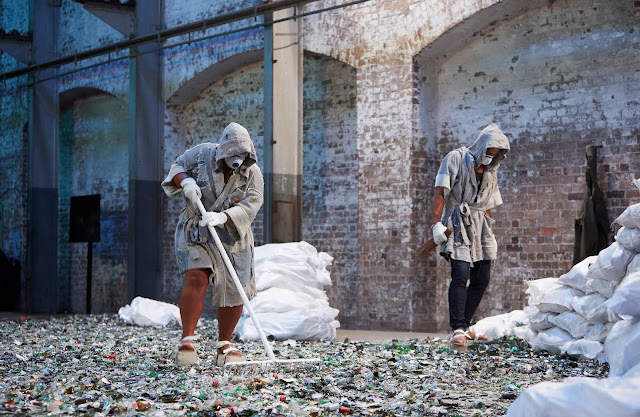A digital exhibit to elevate Indigenous art

In March 2020, the 22nd Biennale of Sydney opened to wide acclaim—only to close after 10 days because of COVID-19. The Biennale has since physically reopened to limited audiences, but now, through a virtual exhibit on Google Arts & Culture, people all over the world can experience it.
This year’s Biennale is led by First Nations artists, and showcases work from marginalised communities around the world, under the artistic direction of the Indigenous Australian artist, Brook Andrew. It’s titled NIRIN—meaning “edge”—a word of Brook’s mother’s Nation, the Wiradjuri people of western New South Wales.
To commemorate the opening of this unique exhibition, and learn more about its origins and purpose, we spoke with Jodie Polutele, Head of Communications and Community Engagement at the Biennale of Sydney.
Tell us about the theme of this year’s exhibition.
NIRIN is historic in its focus on the unresolved nature of Australian and global colonial history. It presents the work of artists and communities that are often relegated to the edge and whose practices challenge dominant narratives.
As a community, we’re at a critical point in time where the voices, histories and spheres of knowledge that have been historically pushed to “the edge” are being heard and shared. The recent Black Lives Matter protests in the United States and in other parts of the world have triggered a belated awakening in many people—particularly in Australia—about the real-life impacts of systemic racism and inequality. But we have a long way to go, and the art and ideas presented in NIRIN are one way to start (or continue) the conversation.
What does this offer audiences, both in Australia, and all over the world, particularly during this time?
Many of the artworks ask audiences to be critical of dominant historical narratives, and our own perspective and privilege; we are forced to recognise and question our own discomfort. In doing so, they also present an opportunity to inspire truly meaningful action.
What are some of the highlights of the exhibition?
Some highlights include Healing Land, Remembering Country by Tony Albert, a sustainable greenhouse which raises awareness of the Stolen Generations and poses important questions about how we remember, give justice to and rewrite complex and traumatic histories. Latai Taumoepeau’s endurance performance installation on Cockatoo Island explores the fragility of Pacific Island nations and the struggle of rising sea levels and displacement. Zanele Muholi’s three bodies of work at the Museum of Contemporary Art look at the politics of race, gender and sexuality. Wiradjuri artist Karla Dickens’ installation A Dickensian Circus presents a dramatic collection of objects inside the Art Gallery of New South Wales’ grand vestibule, reclaiming the space to share the hidden stories and histories of Indigenous people.
Tony Albert's sustainable greenhouse posing important questions about historical and intergenerational trauma

This virtual exhibit was not what you originally imagined. Can you tell us what hurdles you have had to overcome?
The Biennale of Sydney takes more than two years to produce with a team of dedicated people. Closing the exhibitions and cancelling or postponing a program of more than 600 events was devastating. But with the enormous support of the Google Arts & Culture team, we have delivered a virtual exhibition that is respectful of artists’ works and conveys the true vision of NIRIN—inspiring conversation and action through a meaningful arts experience. We hope that NIRIN on Google Arts & Culture will be an enduring legacy for the exhibition, and also for the talented team who made it happen.
Watch Latal Taumoepeau's endurance performance, The Last Resort




